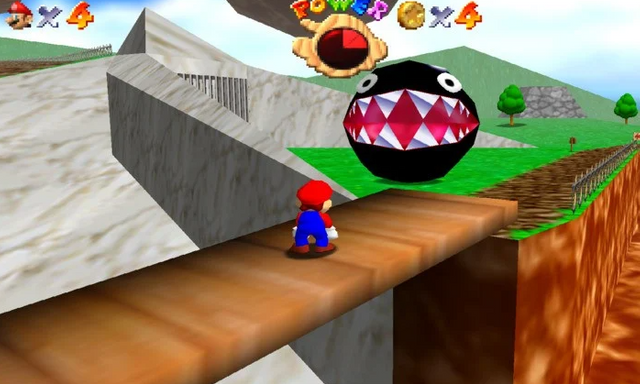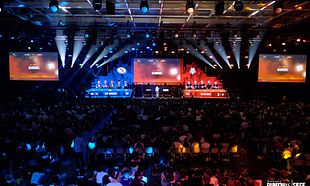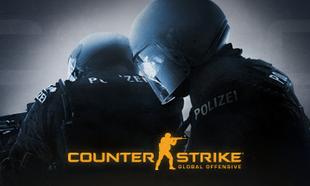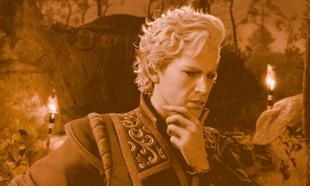Prior to 1997, Mario was one of the biggest names in gaming.
His exploits on the NES in the 1980's single-handily revived the gaming industry after the crash of 1983 and helped Nintendo become a household name.
When the plumber made the jump to 3D in this very month in 1997, gaming history changed forever.
In the sprite era, Mario moving from left-to-right was as big a revolution in gaming history as Elvis Presley shaking his hips on TV in the 1950s.
The simple premise was adapted and adored by many, with 'Super Mario Brothers' ending up as one of the biggest-selling games of all time.
Cut to 10 years later, and Nintendo found themselves no longer the kingmakers in the console environment they helped create.
The Sony PlayStation was released in late 1994 in Japan and changed the face of the industry seemingly overnight.
Those well-versed in gaming history know that Sony turned down the offer to team up with Nintendo to create CD-rom add-on for the SNES.
Sony went solo, and Nintendo HQ must have been kicking themselves when the PlayStation became the hottest ticket in town.
The Nintendo 64 was Nintendo's response to the cultural juggernaut that was the PlayStation, and while it ultimately lost the war, it claimed a number of victories along the way.
'Super Mario 64' is one of those scalps.
When I'm 64
The Nintendo 64 had perhaps the greatest exclusive title line-up in the history of video gaming: 'Goldeneye', 'Ocarina Of Time', 'Star Fox 64', were all considered for this series, but only one game represented the biggest revolution in gaming history at that stage.
When Mario changed from 2D to 3D, gaming was never the same again.
3D technology became more widely adopted by developers in the mid-1990's and indeed 'Mario 64' wasn't the first fully 3D game to be released, but it was the game that made the practice mainstream.
25 years later, games like 'Elden Ring' or 'Horizon: Forbidden West' wouldn't be possible without Mario's innovations in the world of 3D.
Readers of a certain vintage may take 3D for granted, but for the time 3D was indeed a big deal.
Our website launched in 1997, and in the context of gaming history, 'Resident Evil' had just been released and proceeded to give us many sleepless nights.
The zombie dogs jumping through the window in 'Resident Evil' was a tantalising glimpse of what the future of gaming held thanks to 3D graphics, and Nintendo's mascot Mario was poised to ride the wave.
Describing how 'Mario 64' plays is like describing breathing or air, it is, in the simplest possible terms, video gaming in its purest form.
The fact there's a strong speed-running community for the game 25 years later is a testament to how the game has been passed down from one generation to the next, like folklore.
Dedicated individuals are still trying to find secrets and easter eggs in the game a quarter of a century after the fact, and games don't cultivate that kind of response in people unless the gameplay is cardinally great.
In this case, 'Mario 64' is just that - even when playing the game on the Nintendo Virtual Console for the purposes of this article the game still controls and handles like a dream, and after 5 minutes you're left wondering why aren't people playing this game every day of the week.
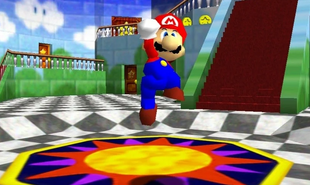
'Super Mario Odyssey' in 2017 was widely regarded as one of Mario's best outings, with many critics and players dubbing it 'Mario 64' for a new generation.
'Super Mario Odyssey' builds and hits upon what Mario did in the 90's - give players free rein of a beautifully designed world with memorable levels and you're golden.
The carefree, goofy nature of the 'Mario' games is something that very few games can pull off, and indeed, very few games possess the environmental storytelling chops that 'Mario' can pull off.
For a 1997 game, the main castle players wander around is still impeccably designed and is an iconic piece of video game art direction.
The Man With The Mustache
The man at the centre of the affair is one of the most recognisable figures in gaming, and starring in 4 blockbuster titles in 4 consecutive decades is proof of the plumber's star power.
Mario's affable personality and gleeful whoops as he jumps around is a large part of why the moustached plumber has endured for all these years.
No matter how fantastical the situations got, Mario always served as a character that players can project themselves onto.
The "everyman" archetype is a character trait as old as storytelling itself, and audiences love to root for someone who is just like them.
Mario is the ultimate relatable character because he isn't a grizzled, macho and handsome man like Zac Efron, it's because he looks like your mate's dad.
The overalls and red cap make him instantly recognisable the world over, and thanks to the 3D graphics, players could project themselves onto Mario better than before.
Of course, with 1997 technology being what they were the graphics look charmingly outdated now, but to bring it back to the core thesis, there was a time where this was mind-blowing.
The computers that put astronauts on the moon in 1969 had less than 0.5 MHz processing power.
The Nintendo 64, for comparison, had 62.5 MHz worth of graphics to generate Mario's first 3D outing.
In that time computing power has become exponentially more powerful, but the simple charm of seeing Mario run around the opening stretch all the way back in 1997 must have been a moon landing moment in its own right.
To this day, Mario is the man who sells Nintendo's machines, and with his Nintendo 64 outing, he took the baton of being an 80s cultural icon into becoming a superstar for the 1990s.
